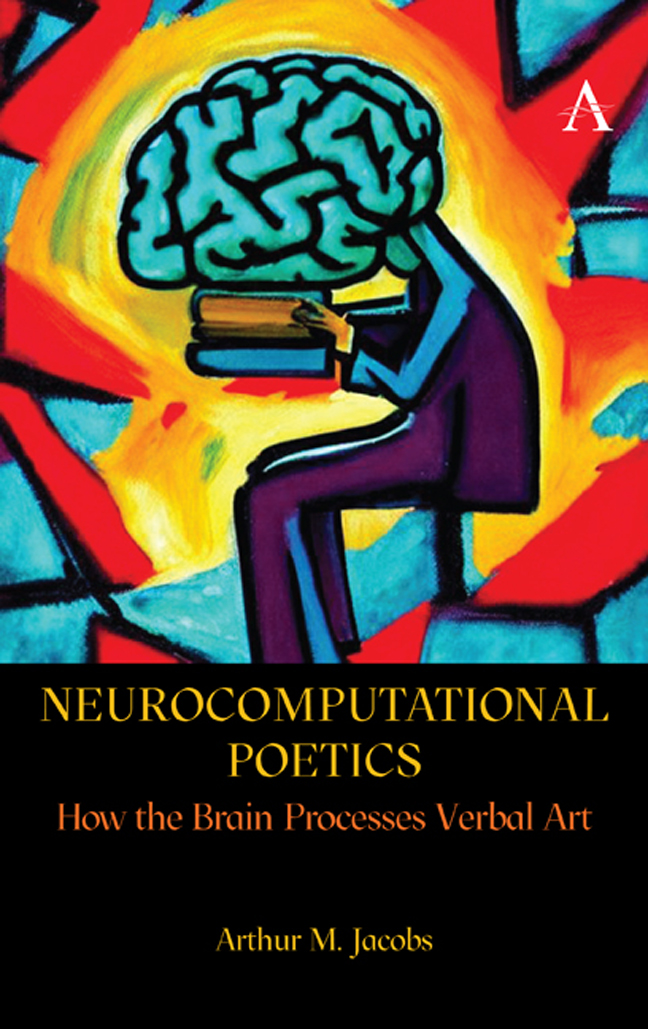Book contents
- Frontmatter
- Contents
- Acknowledgements
- Dedication
- Preface
- 1 Introduction: The Two Boons of an Unnatural Daily Activity
- 2 Models and Methods
- 3 Text Analysis
- 4 Reader and Reading Act Analysis
- 5 Computational Poetics I: Simple Applications
- 6 Computational Poetics II: Sophisticated Applications
- 7 Neurocomputational Poetics I: Upper Route Studies
- 8 Neurocomputational Poetics II: Lower Route Studies
- 9 Conclusions
- References
- Index
5 - Computational Poetics I: Simple Applications
Published online by Cambridge University Press: 01 March 2024
- Frontmatter
- Contents
- Acknowledgements
- Dedication
- Preface
- 1 Introduction: The Two Boons of an Unnatural Daily Activity
- 2 Models and Methods
- 3 Text Analysis
- 4 Reader and Reading Act Analysis
- 5 Computational Poetics I: Simple Applications
- 6 Computational Poetics II: Sophisticated Applications
- 7 Neurocomputational Poetics I: Upper Route Studies
- 8 Neurocomputational Poetics II: Lower Route Studies
- 9 Conclusions
- References
- Index
Summary
In the preceding chapters, I have laid the ground for actual applications in Neurocomputational Poetics: we have the model and a set of methods for text, reader and reading act analyses. The next two chapters discuss concrete examples of how we can apply this toolbox.
My aim in the present chapter about simple applications is to
• make people who love literature aware of methods for computational poetics and their utility to further our understanding of how the pleasures of reading are constructed in the brain in response to a myriad of simple features that, in concert produce a complex symphony;
• show people who have no skills or interest in programming languages how to apply simple tools and ready-to-go apps so that they produce fascinating analyses of complex texts that not only offer new insights about verbal art but also testable predictions for scientific studies.
Euphony and Eusemy: Sound and Meaning Beauty
In poetry speech sounds spontaneously and immediately display their proper semantic function.
–––Jakobson and Waugh, (1979, p. 225).According to Tenet 2 in Chapter 2, poetic effects start at the micropoetic level of single words, and already young children are able to both perceive and produce them. There are a number of simple methods to compute the potential of single words to create such effects based on two fundamental aspects: sound and meaning. No doubt, words can have a more or less pleasing sound such as in ‘pee’ vs. ‘piss’ and they can have more or less ugly meanings such as in ‘murder’ vs. ‘beauty’. But how do these two potential sources of micropoetic effects interact at the lexical level? And what role do they play when acting in the context of a line or stanza?
From the very beginning of poetry on Sumerian plates in the twenty-fourth century BC, poets knew that sound and meaning must not be independent – as posited in de Saussure's famous first principle of general linguistics – but could very well influence each other. A book summarizing results of the annual elections of the most beautiful German word is full of examples for words in which ‘euphony ∼ eusemy’, that is, they are beautiful in both sound and meaning. On the other hand, there are words that mean something beautiful, a colourful butterfly for instance, but they do not sound nicely. The German word for butterfly, ‘Schmetterling’, is a notorious example.
- Type
- Chapter
- Information
- Neurocomputational PoeticsHow the Brain Processes Verbal Art, pp. 113 - 140Publisher: Anthem PressPrint publication year: 2023

